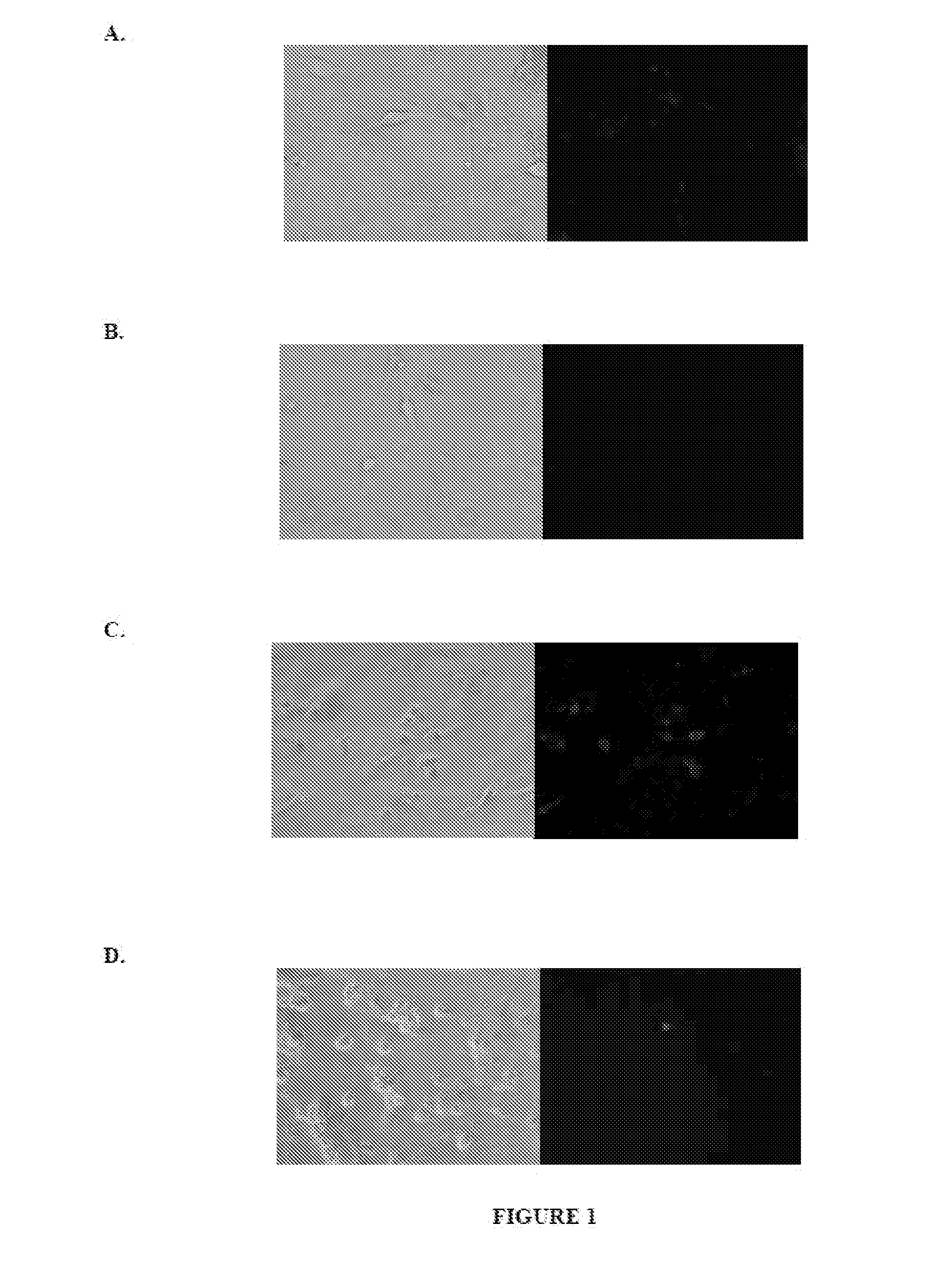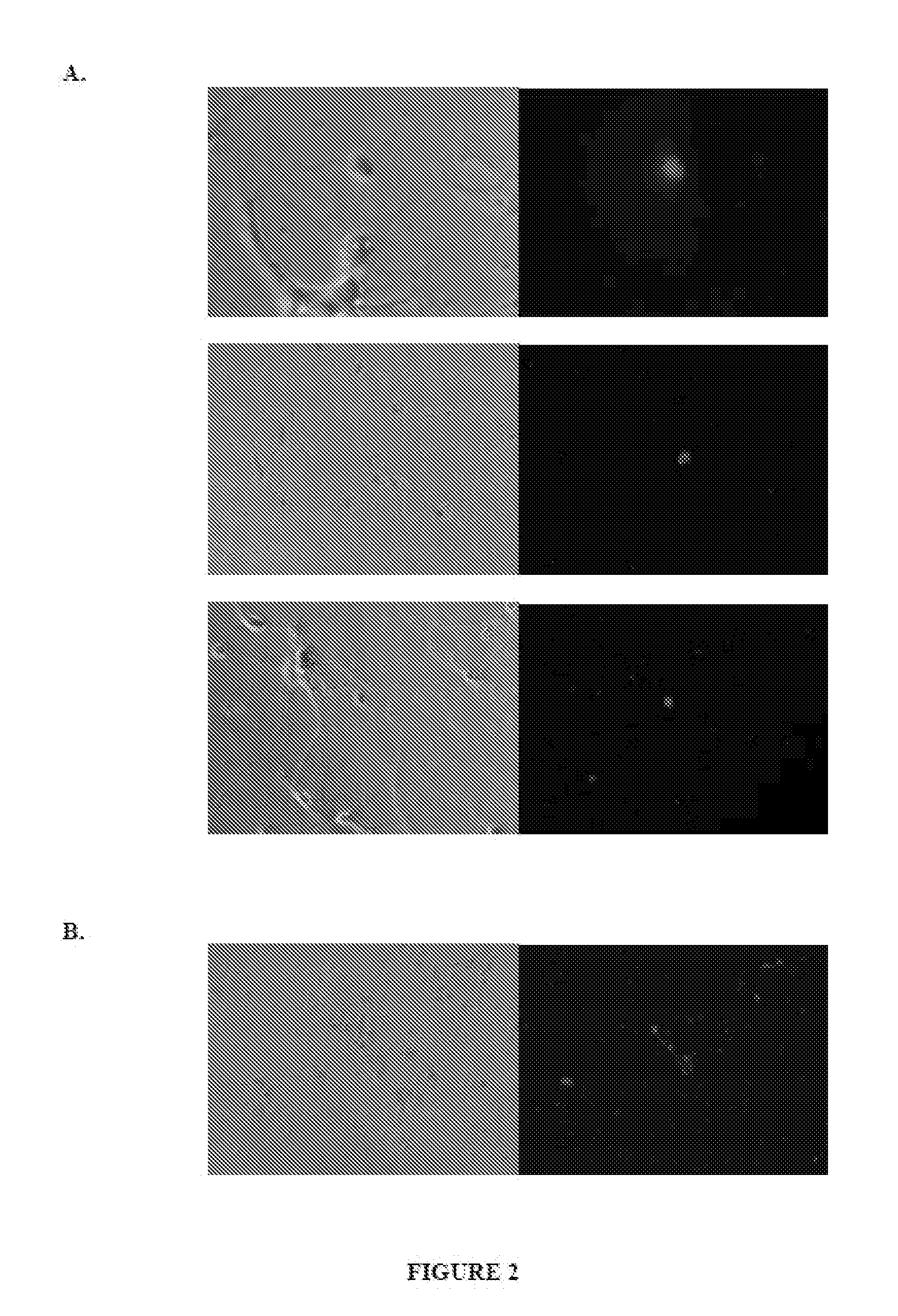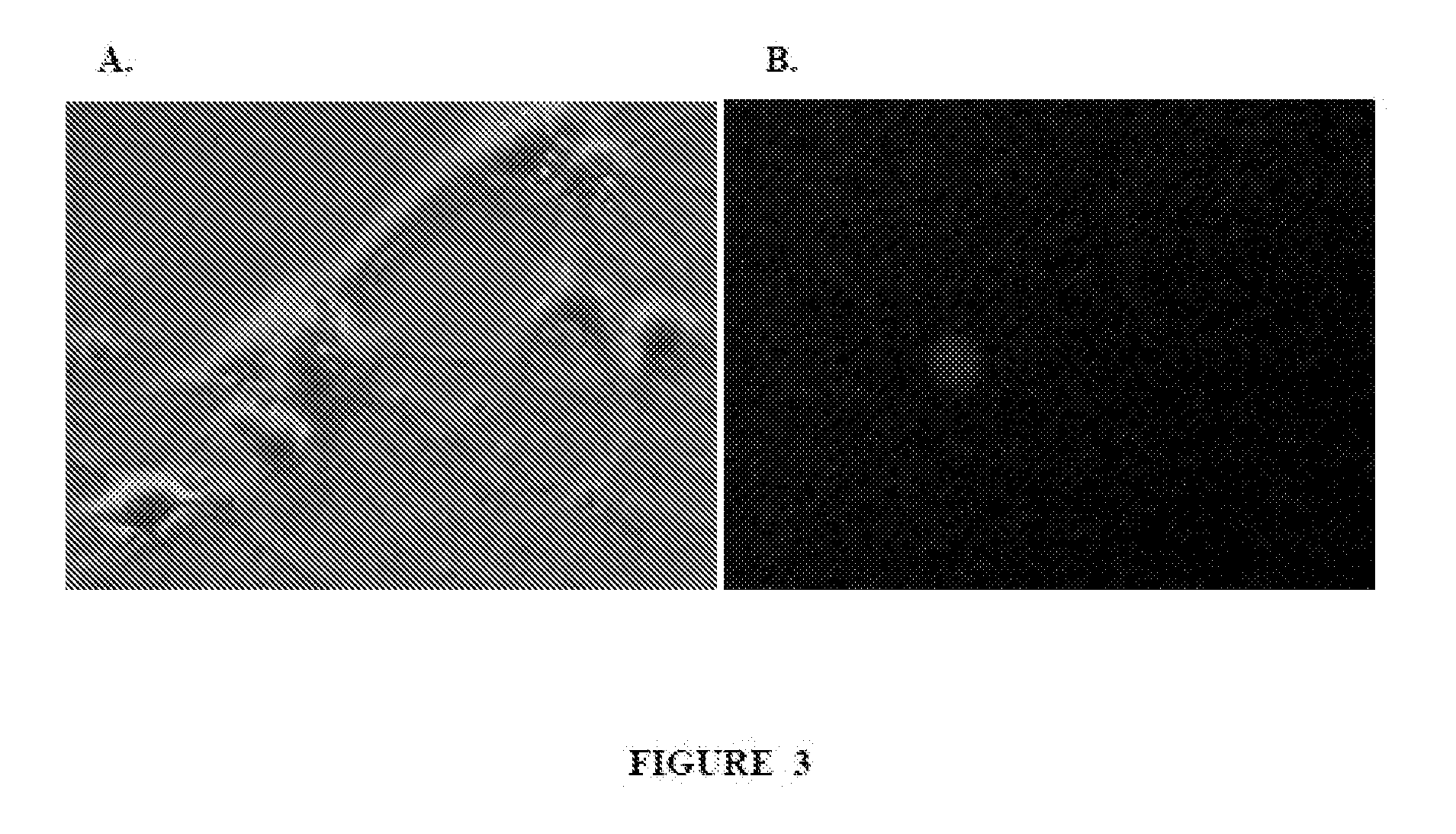Neural transfection reagents
a technology of neural circuits and reagents, applied in the field of neuronal transfection, can solve the problems of notably inefficient non-viral transfection reagents for the delivery of nucleic acids to neurons or neural circuits in vivo, or to mature neurons in vitro, and the use of reagent-based methods for the genetic manipulation of neurons is typically limited
- Summary
- Abstract
- Description
- Claims
- Application Information
AI Technical Summary
Benefits of technology
Problems solved by technology
Method used
Image
Examples
example 1
Neuronal Uptake of Cationic Nanoparticles Disposed within a Neural Transport Agent
[0154]Conventional transfection reagents are not efficient at transfecting mature neurons. Typically, transfection reagents comprise a cationic carrier molecule, for example PEI or DOTAP, complexed with nucleic acid in nanoparticulate form. Such nanoparticles do not efficiently cross the plasma membrane of mature neurons, which is a necessary step for nucleic acid transfection. The following experiment was performed to investigate the effect of modifying the surface chemistry of a cationic carrier nanoparticle.
[0155]Rhodamine-labeled, amine-functionalized polystyrene nanoparticles (100 nm diameter) were obtained from Phosphorex, Inc. (Fall River, Mass., “Fluorophorex,” product #2221-01). These cationic nanoparticles are a styrene and amine co-polymer (5% of the repeating units contain pendent primary amines). The nanoparticle surface chemistry was covalently modified with polyacrylic acid (5000 g / mol, ...
example 2
Neuronal Uptake of Cationic Nanoparticles Disposed within a Neural Transport Agent
[0165]The surface chemistry of cationic nanoparticles was stably modified with horseradish peroxidase as neural transport agent, and the nanoparticle / HRP conjugate was introduced into neuronal cells as follows.
[0166]Fluorescent cationic nanoparticles (100 nm diameter polystyrene with 5 mole % pendent primary amine, 1% wt / vol in water) were obtained from Phosphorex, inc. (Fall River, Mass., “Fluorophorex,” product #2221-01). The nanoparticles were dialyzed (100 k molecular weight cut-off membrane) into PBS, pH 7.4, and diluted 5 fold for biotinylation (Sulfo-NHS-LC-Biotin, Thermo Fisher Scientific, Inc., Rockford Ill.).
[0167]Biotinylation reactions were carried out at room temperature in PBS, pH 7.4 for 45 minutes in the dark. The reaction was carried out over a range of 300 μM to 300 nM biotinylation reagent (range of 50,000, 5000, 500 or 50 molecules of sulfo-NHS-LC-biotin per nanoparticle). It was ob...
example 3
Nucleic Acid Transfection of Developmentally Mature Neurons Via Surface Modification of Polyplex with a Neural Transport Agent
[0174]Phosphine-functionalized polyplex and azido-functionalized polyacrylic acid (PAA) were prepared prior to their conjugation. To prepare functionalized polyplex, Chitosan (Novafect G 214, glutamate salt, >90% deacetylated chitin) was purchased from Novamatrix (Sandvika, Norway), and complexed with pCAG-EGFP (Clontech, Otsu, Japan) in ultrapure water at a charge ratio of 4:1 (nitrogen:phosphate), according to the manufacturer's directions. The polyplex was then purified by size exclusion chromatography, exchanging the polyplex into phosphate buffered saline (PBS), pH 7.4. The polyplex was then modified with sulfo-NHS-phosphine (Thermo Fisher Scientific, Rockford, Ill.) for 30 minutes in the dark at 22° C., and repurified by size exclusion chromatography. The mole ratio of phosphine to chitosan in the coupling reaction was estimated to be 5:1.
[0175]PAA (500...
PUM
| Property | Measurement | Unit |
|---|---|---|
| diameter | aaaaa | aaaaa |
| diameter | aaaaa | aaaaa |
| diameter | aaaaa | aaaaa |
Abstract
Description
Claims
Application Information
 Login to View More
Login to View More - R&D
- Intellectual Property
- Life Sciences
- Materials
- Tech Scout
- Unparalleled Data Quality
- Higher Quality Content
- 60% Fewer Hallucinations
Browse by: Latest US Patents, China's latest patents, Technical Efficacy Thesaurus, Application Domain, Technology Topic, Popular Technical Reports.
© 2025 PatSnap. All rights reserved.Legal|Privacy policy|Modern Slavery Act Transparency Statement|Sitemap|About US| Contact US: help@patsnap.com



